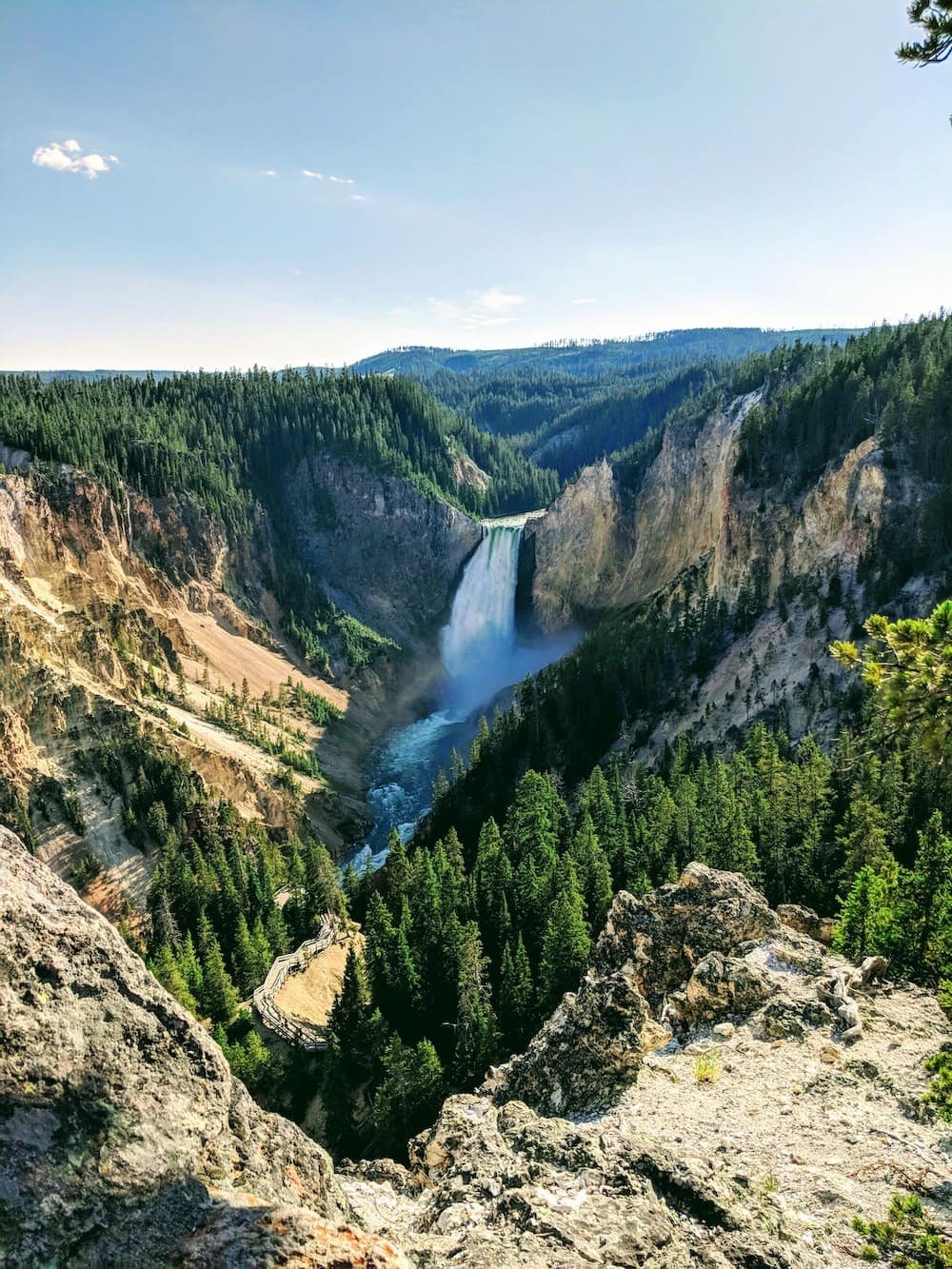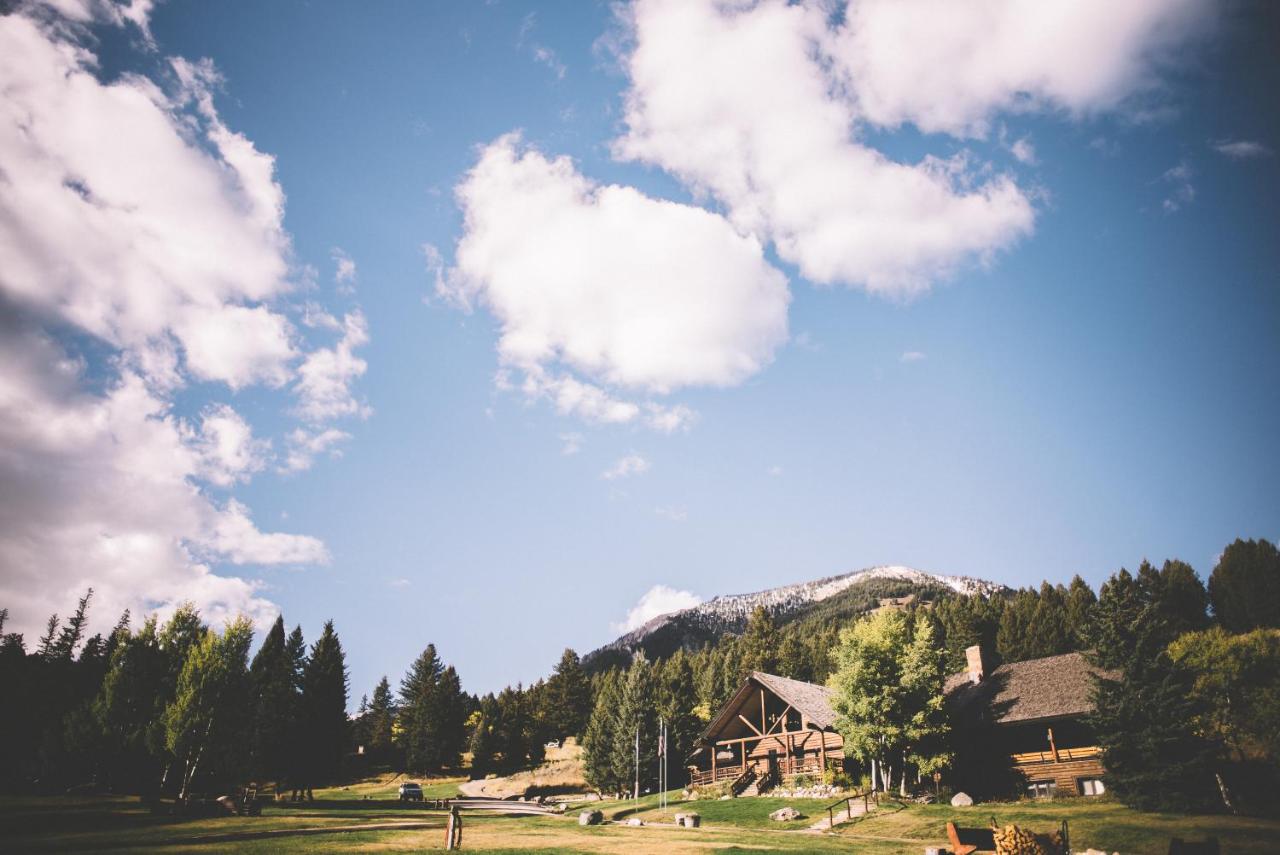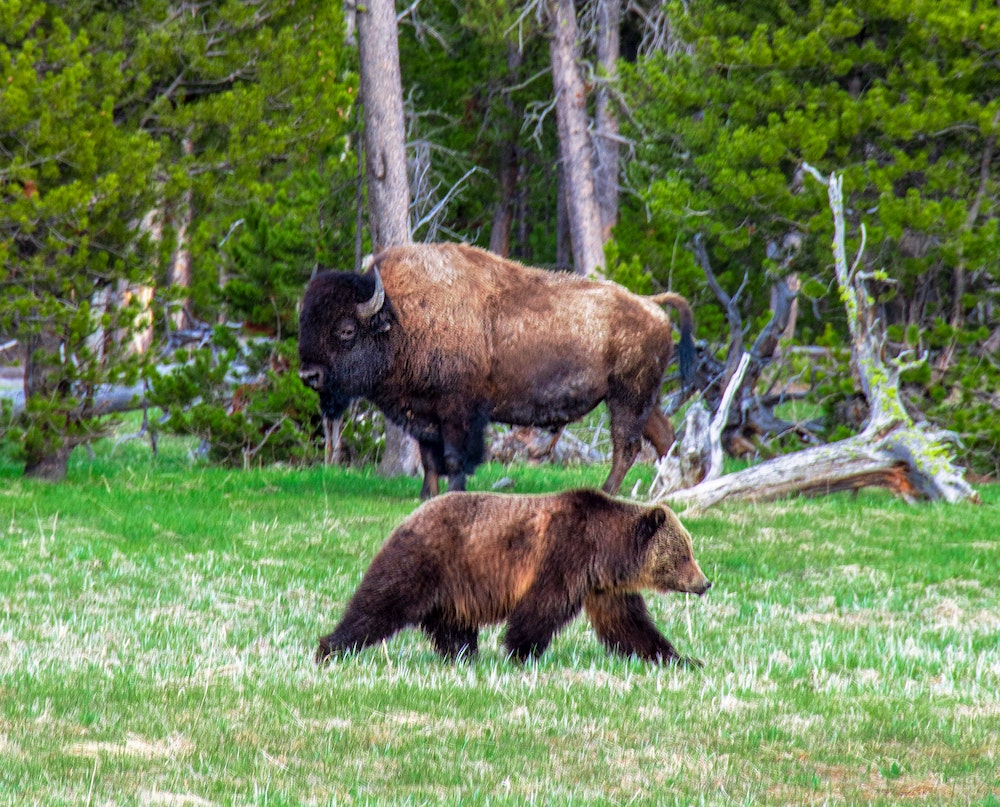Yellowstone National Park is the crown jewel of America's nature parks
Disclosure: Bear in mind that some of the links in this post are affiliate links and if you go through them to make a purchase we will earn a commission at no additional cost to you. We chose these companies / hotels because of their quality and not because of the commission we receive from your purchases.
Get ready to capture the essence of nature's beauty as you step into Yellowstone National Park. Brace yourself to be awestruck as this park boasts thousands of both small and large geysers, bubbling mud pools, limestone terraces, turquoise blue lakes, hot springs with shades of yellow and orange, deep canyons, and pine forests. It is not surprising that Yellowstone National Park is considered the crown jewel of America's nature parks, the largest National Park in America, and the oldest national park in the world. With its breathtaking views, it is also regarded as one of the most stunning natural areas globally.
In addition to the scenic views, this area is also home to numerous animal species, such as grizzly bears, brown bears, wolves, elk, and bison, making it an ideal spot for wildlife lovers.
Yellowstone in America was declared a national park in 1872. The nature reserve lies on a so-called Hot Spot, a place where the earth's crust is thinner than elsewhere on earth. This makes for surprising volcanic natural phenomena, such as bubbling hot springs, meters-high geysers (the national park has no less than 300) and colourful lakes. In the park (which consists largely of forest) you can find more than 200 geysers and 10,000 hot springs. The 3474 sq miles (9,000 square kilometres) of artistic natural beauty can have you mesmerized for many days.
Highlights and what to do in Yellowstone
In addition to trekking, horseback
riding and mountain biking, Yellowstone has all sorts of activities to
chose from. Hiking along smelly - but beautiful - sulphur pools,
visiting the famous Old Faithful geyser or swimming in natural hot
springs. Also don't miss these highlights:
- Dive into the hot springs of Mammoth Country. Be sure to visit the terraces formed by limestone water.
- In Geyser Country, watch the famous Old Faithful geyser as it releases 8454 gallons (32,000 litres) of water 30 meters (98 ft) into the air every half hour to 3 hours.
- Grand Prismatic: a colourful pool. The many hues create a surreal image and make it one of the most photographed natural wonders in America. It is a magnificent feature of nature.
- Drive past Yellowstone Lake in Lake Country, the highest lake in the United States 2,357 feet (720 meters). It is fun to canoe here.
- See the petrified trees, clear rivers and overgrown hills in Roosevelt Country
- National Elk Refuge: nature preserve with an estimated 7,500 elk, 1,000 bison, bighorn sheep, mule deer, etc. Wolves and grizzly bears are sometimes seen as well.
- Gray's Lake National Wildlife Refuge: beautiful marshland with many wildflowers and large flocks of Canadian cranes.
Where to stay in Yellowstone National Park
In terms of lodging, there are many options in and around Yellowstone, with both basic and very luxurious
hotel rooms. The park has the most heavenly places to spend the night in nature. Most of these lodges are located near a visitor centre
where you can enter and get a lot of information about the park. One of the most
popular places to sleep is the Old Faithful Inn, here you are close to the
big geyser that erupt every 90 minutes.
Another nice place to experience Yellowstone in both winter and summer is called the Lone Mountain Ranch just outside the north west border of Yellowstone National Park in Montana. This property is not in everyone's budget range, but if you have the money you won't regret it. Their restaurant offers 5 star dining and the service goes above and beyond. During winter you can take the sleigh ride dinner. An experience you won't easily forget.
 Picture Lone Mountain Ranch by: Booking.com
Picture Lone Mountain Ranch by: Booking.com
Also a big plus is that the staff of the Lone Mountain Ranch is deeply committed to protecting and preserving this
undisturbed natural area.
Camping in the park
Want to be in the middle of the highlights for little money? Then go camping. There are many different camp grounds in Yellowstone where you can pitch your tent or RV. For some you can reserve a spot in advance on this website and some campsites do first come, first serve.
In the visitor centre there are screens so you can see which campsites are still available. I had reserved my campsites for Yellowstone in advance (June 2019), but it turned out later that this was not necessary. There were still plenty of spots available.
How to get to Yellowstone
A round trip to Yellowstone is not the most common trip in the United States: usually people choose a round trip to the national parks near Las Vegas, San Francisco and L.A. There is no public transport or shuttle bus system in Yellowstone, so you can best visit the park by car. The park has no less than five different entrances:- North Entrance near Gardiner (Montana). This is the only entrance open year-round.
- Northeast Entrance at Silver Gate (Montana).
- East Entrance on the side of Cody (Wyoming).
- South Entrance on the side of Grand Teton National Park (Wyoming).
- West Entrance on the side of West Yellowstone (Montana).
Due to snowfall and construction, not all entrances and roads are open all year. So check before you go where you can pass. The latest information can be found on this page. Given the size of the park I would always do this, because detouring from one entrance to another can cost you at least a few hours of your time.
Wildlife Yellowstone Park
Yellowstone is not only one of the largest geothermal areas, it is also a refuge for many wildlife. Wildlife in Yellowstone includes deer, white-tailed and mule deer, elk, bighorn sheep, wolves, coyotes and cougars. Black bears and grizzly bears are also often spotted. The park is the only area in the US where herds of wild bison can roam freely again. It is estimated that there are currently 2000 bison. This means you are regularly in a traffic jam because there are bison on the road.
The animals are king in Yellowstone
and can be dangerous. It is therefore important to keep your distance.
From bison's and elk you have to keep a minimum distance of 25 yards
(23 meters) and from bears and wolves 100 yards (91 meters). Keep this in mind to avoid dangerous situations.
For your own safety (especially
if you plan to make many long walks) it is wise to buy bear spray. This
is a kind of extra strong pepper spray that can keep bears (and other
wildlife) away if necessary. Bear spray can be bought at every visitor centre where you can ask the ranger how it works.
How much does a visit to Yellowstone National Park cost?
A
visit per car costs $35 (2019, regardless of the number of occupants) and is
valid for seven days. Are you visiting more national parks in America?
Then it may be more economical to purchase an annual pass. The America the Beautiful pass costs $80.
How much time do you need for Yellowstone National Park?
Yellowstone
is huge and there is an incredible amount to see and do. Do not
underestimate this if you want to visit the park, you do not drive
through it in a day. To see all the highlights of Yellowstone I would
take at least five days. More is always smart if you like to do a lot of
hiking. If you have less than three days, I would save your visit to
Yellowstone for a future trip.
What is the best travel time for Yellowstone?
It is an obvious question if you have plans to visit the
oldest national park in the world. After all, you want to make sure you
can admire the park in all its beauty. Of course, the best
time to travel to Yellowstone depends on the purpose of your trip. If
you want to see snow than you will have to travel in the cold months October until March. During these months you have
to take into account the closures of the park. Most people however want to visit Yellowstone when the
temperature is pleasant and everything is in bloom.
If you want to
increase your chances of pleasant temperatures then June through
September is the best time to travel to Yellowstone National
Park. Although certainly in early June a (nightly) snow shower is still possible. In general these months provide a good number
of sunshine hours and a daytime temperature of about 20 degrees
Celsius (68ºF). Especially in July and August, when the weather and climate in
Yellowstone is most pleasant, many people travel to Wyoming. The chance
of park closures is also the smallest in these months. If you go to Yellowstone for
the geysers, waterfalls, bubbling mud pools and hot springs, then all
summer months are suitable for visiting the park. Wildlife is also
frequent throughout the high season.
Are
you going to Yellowstone National Park specifically for bears? Then
March and April are the best travel period, when they are just coming
out of hibernation. Wolves are especially drawn to the park during winter. Bison, moose and elk can also be seen in the fall, winter and
spring.
Off season to Yellowstone
Are you
adventurous and don't mind wearing a thick winter coat? Then you can
also visit Yellowstone outside the summer months. Flexibility is
desirable because, especially in the sometimes freezing
cold winter months, large parts of the park may be closed, so you will
not be able to see all the sights in Yellowstone. Roads and trails may
be closed due to snowfall until May or even early June.
The big
advantage of travelling between October and May is that there are far
fewer people in the park. And staying overnight in Yellowstone is
therefore cheaper. You can have the geysers and hot springs all to
yourself these months. And the snow gives the park a magical sight. Click here for more climate details in Yellowstone.